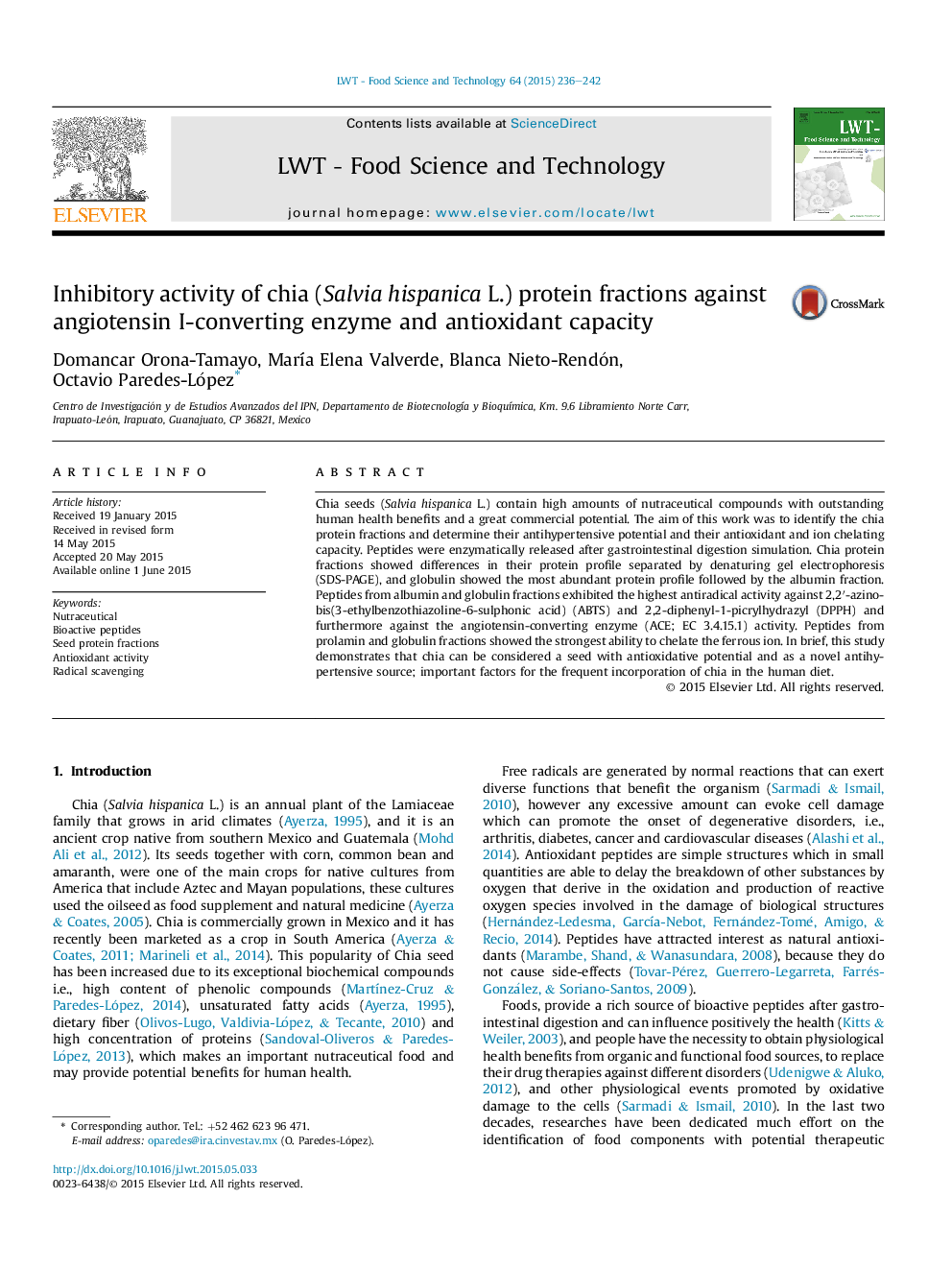| Article ID | Journal | Published Year | Pages | File Type |
|---|---|---|---|---|
| 6400763 | LWT - Food Science and Technology | 2015 | 7 Pages |
â¢Albumin and globulin peptides showed the highest antiradical activity against DPPH and ABTS.â¢Albumin and globulin peptides inhibited strongly the ACE activity.â¢Peptides from prolamin and globulin exert the strongest chelation.
Chia seeds (Salvia hispanica L.) contain high amounts of nutraceutical compounds with outstanding human health benefits and a great commercial potential. The aim of this work was to identify the chia protein fractions and determine their antihypertensive potential and their antioxidant and ion chelating capacity. Peptides were enzymatically released after gastrointestinal digestion simulation. Chia protein fractions showed differences in their protein profile separated by denaturing gel electrophoresis (SDS-PAGE), and globulin showed the most abundant protein profile followed by the albumin fraction. Peptides from albumin and globulin fractions exhibited the highest antiradical activity against 2,2â²-azino-bis(3-ethylbenzothiazoline-6-sulphonic acid) (ABTS) and 2,2-diphenyl-1-picrylhydrazyl (DPPH) and furthermore against the angiotensin-converting enzyme (ACE; EC 3.4.15.1) activity. Peptides from prolamin and globulin fractions showed the strongest ability to chelate the ferrous ion. In brief, this study demonstrates that chia can be considered a seed with antioxidative potential and as a novel antihypertensive source; important factors for the frequent incorporation of chia in the human diet.
